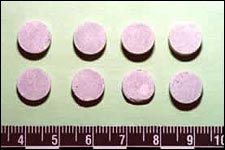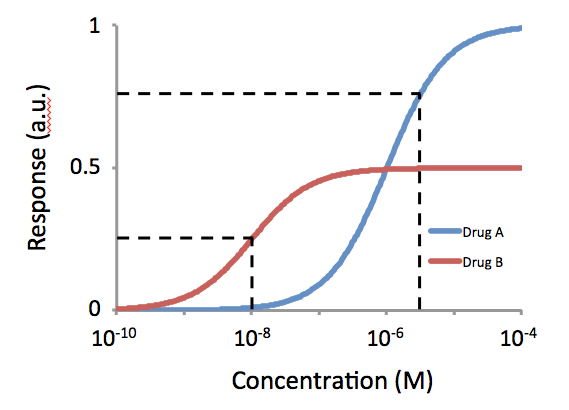|
Para-methoxymethamphetamine
''para''-Methoxymethamphetamine (PMMA), also known as 4-methoxy-''N''-methylamphetamine (4-MMA), is a serotonergic drug of the amphetamine family related to ''para''-methoxyamphetamine (PMA). It is the 4-methoxy analogue of methamphetamine. Little is known about the pharmacological properties, metabolism, and toxicity of PMMA; because of its structural similarity to PMA, which has known toxicity in humans, it is thought to have considerable potential to cause harmful side effects or death in overdose. In the early 2010s, a number of deaths in users of the drug MDMA were linked to misrepresented tablets and capsules of PMMA. PMMA is a serotonin–norepinephrine releasing agent (SNRA) as well as potent monoamine oxidase inhibitor (MAOI). Its effects in humans are reputedly similar to those of PMA, but slightly more empathogenic in nature. It has a reduced tendency to produce severe hyperthermia at low dosages, but at higher dosages side effects and risk of death become similar ... [...More Info...] [...Related Items...] OR: [Wikipedia] [Google] [Baidu] |
Substituted Amphetamine
Substituted amphetamines, or simply amphetamines, are a chemical class, class of compounds based upon the amphetamine structure; it includes all derivative (chemistry), derivative compounds which are formed by replacing, or substitution reaction, substituting, one or more hydrogen atoms in the amphetamine core structure with substituents. The compounds in this class span a variety of pharmacological subclasses, including stimulants, Empathogen-entactogen, empathogens, and hallucinogens, among others. Examples of substituted amphetamines are amphetamine (itself), methamphetamine, ephedrine, cathinone, phentermine, mephentermine, tranylcypromine, bupropion, methoxyphenamine, selegiline, amfepramone, amfepramone (diethylpropion), pyrovalerone, MDMA (ecstasy), and 2,5-dimethoxy-4-methylamphetamine, DOM (STP). Some of amphetamine's substituted Derivative (chemistry), derivatives occur in nature, for example in the leaves of ''Ephedra (genus), Ephedra'' and khat plants. Amphetamine w ... [...More Info...] [...Related Items...] OR: [Wikipedia] [Google] [Baidu] |
Serotonin–norepinephrine Releasing Agent
A serotonin–norepinephrine releasing agent (SNRA) is a type of drug which induces the release of serotonin and norepinephrine (and epinephrine) in the body and/or brain. Only a few SNRAs are known, examples of which include norfenfluramine, (''R'')-MDMA, MBDB, and MDAI. Fenfluramine produces norfenfluramine as a major active metabolite and hence is an SNRA similarly. It was formerly used as an appetite suppressant for the treatment of obesity. (''R'')-MDMA, MBDB, and MDAI are entactogens. A closely related type of drug is a serotonin–norepinephrine reuptake inhibitor Serotonin–norepinephrine reuptake inhibitors (SNRIs) are a class of antidepressant medications used to treat major depressive disorder (MDD), anxiety disorders, social phobia, chronic neuropathic pain, fibromyalgia syndrome (FMS), and menopaus ... (SNRI). Mechanism of action See also * Monoamine releasing agent * Serotonin releasing agent * Norepinephrine releasing agent * Serotonin–dopamine ... [...More Info...] [...Related Items...] OR: [Wikipedia] [Google] [Baidu] |
Potency (pharmacology)
In pharmacology, potency or biological potency is a measure of a drug's biological activity expressed in terms of the dose required to produce a pharmacological effect of given intensity. A highly potent drug (e.g., fentanyl, clonazepam, risperidone, benperidol, bumetanide) evokes a given response at low concentrations, while a drug of lower potency (e.g. morphine, alprazolam, ziprasidone, haloperidol, furosemide) evokes the same response only at higher concentrations. Higher potency does not necessarily mean greater effectiveness nor more side effects nor less side effects. Types of potency The International Union of Basic and Clinical Pharmacology (IUPHAR) has stated that "potency is an imprecise term that should always be further defined", and lists of types of potency as follows: Miscellaneous Lysergic acid diethylamide (LSD) is one of the most potent psychoactive drug A psychoactive drug, psychopharmaceutical, mind-altering drug, consciousness-altering drug, ... [...More Info...] [...Related Items...] OR: [Wikipedia] [Google] [Baidu] |
Psychedelic Drug
Psychedelics are a subclass of hallucinogenic drugs whose primary effect is to trigger non-ordinary mental states (known as psychedelic experiences or "trips") and a perceived "expansion of consciousness". Also referred to as classic hallucinogens or serotonergic hallucinogens, the term ''psychedelic'' is sometimes used more broadly to include various other types of hallucinogens as well, such as those which are atypical or adjacent to psychedelia like salvia and MDMA, respectively. Classic psychedelics generally cause specific psychological, visual, and auditory changes, and oftentimes a substantially altered state of consciousness. They have had the largest influence on science and culture, and include mescaline, LSD, psilocybin, and DMT. There are a large number of both naturally occurring and synthetic serotonergic psychedelics. Most psychedelic drugs fall into one of the three families of chemical compounds: tryptamines, phenethylamines, or lysergamides. T ... [...More Info...] [...Related Items...] OR: [Wikipedia] [Google] [Baidu] |
Central Nervous System
The central nervous system (CNS) is the part of the nervous system consisting primarily of the brain, spinal cord and retina. The CNS is so named because the brain integrates the received information and coordinates and influences the activity of all parts of the bodies of bilateria, bilaterally symmetric and triploblastic animals—that is, all multicellular animals except sponges and Coelenterata, diploblasts. It is a structure composed of nervous tissue positioned along the Anatomical_terms_of_location#Rostral,_cranial,_and_caudal, rostral (nose end) to caudal (tail end) axis of the body and may have an enlarged section at the rostral end which is a brain. Only arthropods, cephalopods and vertebrates have a true brain, though precursor structures exist in onychophorans, gastropods and lancelets. The rest of this article exclusively discusses the vertebrate central nervous system, which is radically distinct from all other animals. Overview In vertebrates, the brain and spinal ... [...More Info...] [...Related Items...] OR: [Wikipedia] [Google] [Baidu] |
Entactogen
Entactogens, also known as empathogens or connectogens, are a class of psychoactive drugs that induce the production of experiences of emotional communion, oneness, connectedness, emotional openness—that is, empathy—as particularly observed and reported for experiences with MDMA. This class of drug is distinguished from the classes of hallucinogens or psychedelics and stimulants, although entactogens, for instance MDMA, can also have these properties. Entactogens are used both as recreational drugs and are being investigated for medical use in the treatment of psychiatric disorders, for instance MDMA-assisted therapy for post-traumatic stress disorder (PTSD). Notable members of this class include MDMA, MDA, MDEA, MDOH, MBDB, 5-APB, 5-MAPB, 6-APB, 6-MAPB, methylone, mephedrone, αMT, αET, and MDAI, among others. Most entactogens are phenethylamines and amphetamines, although several, such as αMT and αET, are tryptamines. When referring to MDMA and its cou ... [...More Info...] [...Related Items...] OR: [Wikipedia] [Google] [Baidu] |
Nystagmus
Nystagmus is a condition of involuntary (or voluntary, in some cases) Eye movement (sensory), eye movement. People can be born with it but more commonly acquire it in infancy or later in life. In many cases it may result in visual impairment, reduced or limited vision. In normal eyesight, while the Human head, head rotates about an Axis of rotation, axis, distant visual images are sustained by rotating eyes in the opposite direction of the respective axis. The semicircular canals in the vestibule of the ear sense angular acceleration, and send signals to the nuclei for eye movement in the brain. From here, a signal is relayed to the extraocular muscles to allow one's gaze to fix on an object as the head moves. Nystagmus occurs when the semicircular canals are stimulated (e.g., by means of the caloric test, or by disease) while the head is stationary. The direction of ocular movement is related to the semicircular canal that is being stimulated. There are two key forms of nystagm ... [...More Info...] [...Related Items...] OR: [Wikipedia] [Google] [Baidu] |
Yawning
A yawn is a reflex in vertebrate animals characterized by a long inspiratory phase with gradual mouth gaping, followed by a brief climax (or acme) with muscle stretching, and a rapid expiratory phase with muscle relaxation, which typically lasts a few seconds. For fish and birds, this is described as gradual mouth gaping, staying open for at least three seconds and subsequently a rapid closure of the mouth. Almost all vertebrate animals, including mammals, birds, reptiles, amphibians, and even fish, experience yawning. The study of yawning is called chasmology. Yawning (oscitation) most often occurs in adults immediately before and after sleep, during tedious activities and as a result of its contagious quality. It is commonly associated with tiredness, stress, sleepiness, boredom, or even hunger. In humans, yawning is often triggered by the perception that others are yawning (for example, seeing a person yawning, or talking to someone on the phone who is yawning). This is a t ... [...More Info...] [...Related Items...] OR: [Wikipedia] [Google] [Baidu] |
Compulsive Behavior
Compulsive behavior (or compulsion) is defined as performing an action persistently and repetitively. Compulsive behaviors could be an attempt to make obsessions go away. Compulsive behaviors are a need to reduce apprehension caused by internal feelings a person wants to abstain from or control. A major cause of compulsive behavior is obsessive–compulsive disorder (OCD).(1996). Obsessive Compulsive Disorder: Decade of the Brain. National Institutes of Health. "Compulsive behavior is when someone keeps doing the same action because they feel like they have to, even though they know these actions do not align with their goals." There are many different types of compulsive behaviors including Compulsive buying disorder, shopping, hoarding, Compulsive overeating, eating, Problem gambling, gambling, trichotillomania and Dermatillomania, picking skin, itching, Obsessive–compulsive disorder, checking, Arithmomania, counting, washing, Hypersexuality, sex, and more. Also, there are cul ... [...More Info...] [...Related Items...] OR: [Wikipedia] [Google] [Baidu] |
Tachycardia
Tachycardia, also called tachyarrhythmia, is a heart rate that exceeds the normal resting rate. In general, a resting heart rate over 100 beats per minute is accepted as tachycardia in adults. Heart rates above the resting rate may be normal (such as with exercise) or abnormal (such as with electrical problems within the heart). Complications Tachycardia can lead to fainting. When the rate of blood flow becomes too rapid, or fast blood flow passes on damaged endothelium, it increases the friction within vessels resulting in turbulence and other disturbances. According to the Virchow's triad, this is one of the three conditions (along with hypercoagulability and endothelial injury/dysfunction) that can lead to thrombosis (i.e., blood clots within vessels). Causes Some causes of tachycardia include: * Adrenergic storm * Anaemia * Anxiety * Atrial fibrillation * Atrial flutter * Atrial tachycardia * Atrioventricular reentrant tachycardia * AV nodal reentrant tachy ... [...More Info...] [...Related Items...] OR: [Wikipedia] [Google] [Baidu] |
Methylation
Methylation, in the chemistry, chemical sciences, is the addition of a methyl group on a substrate (chemistry), substrate, or the substitution of an atom (or group) by a methyl group. Methylation is a form of alkylation, with a methyl group replacing a hydrogen#Compounds, hydrogen atom. These terms are commonly used in chemistry, biochemistry, soil science, and biology. In biological systems, methylation is Catalysis, catalyzed by enzymes; such methylation can be involved in modification of heavy metals, regulation of gene expression, regulation of Protein#Functions, protein function, and RNA processing. ''In vitro'' methylation of tissue samples is also a way to reduce some histology#Histological Artifacts, histological staining artifacts. The reverse of methylation is demethylation. In biology In biological systems, methylation is accomplished by enzymes. Methylation can modify heavy metals and can regulate gene expression, RNA processing, and protein function. It is a key pro ... [...More Info...] [...Related Items...] OR: [Wikipedia] [Google] [Baidu] |
PiHKAL
''PiHKAL: A Chemical Love Story'' is a book by Alexander Shulgin and Ann Shulgin published in 1991. The subject of the work is Psychoactive drug, psychoactive phenethylamine Derivative (chemistry), chemical derivatives, notably those that act as psychedelic drug, psychedelics and/or empathogen-entactogens. The main title, PiHKAL, is an acronym that stands for "Phenethylamines I Have Known and Loved". The book is arranged into two parts, the first part being a fictionalized autobiography of the couple and the second part describing 179 different psychedelic compounds (most of which Shulgin discovered himself), including detailed synthesis instructions, bioassays, dosages, and other commentary. The second part was made freely available by Shulgin on Erowid while the first part is available only in the printed text. While the reactions described are beyond the ability of people with a basic chemistry education, some tend to emphasize techniques that do not require difficult-to-ob ... [...More Info...] [...Related Items...] OR: [Wikipedia] [Google] [Baidu] |







